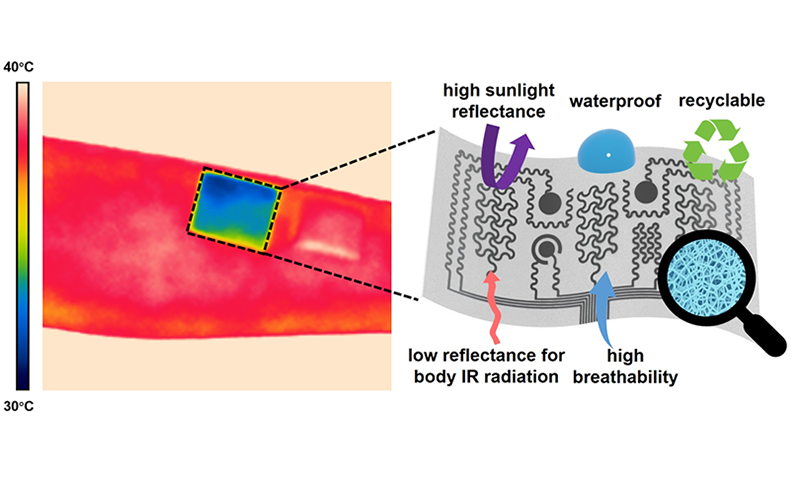When you have a fever or you’re sweating it out in a gym, it’s important to control your body heat. There are few methods available for lowering body temperature but they aren’t very practical because they require external power source.
Read more This Wearable Patch Will Keep You Cool on Hot Summer Days
Now, scientists at the University of Missouri have developed a material that can work as “wearable air conditioning,” cooling the skin by about 11°F. The on-skin device can act as a substrate for flexible body monitoring electronics.
The device includes numerous human health care applications such as the ability to monitor blood pressure, electrical activity of the heart and the level of skin hydration, reports Mizzou News.
The findings are published in the journal Proceedings of the National Academy of Sciences.
Unlike similar products in use today or other related concepts, this breathable and waterproof device can deliver personal air conditioning to a human body through a process called passive cooling. Passive cooling does not utilize electricity, such as a fan or pump, which researchers believe allows for minimal discomfort to the user.

“Our device can reflect sunlight away from the human body to minimize heat absorption, while simultaneously allowing the body to dissipate body heat, thereby allowing us to achieve around 11 degrees Fahrenheit of cooling to the human body during the daytime hours,” said corresponding author Zheng Yan, an assistant professor in the College of Engineering. “We believe this is one of the first demonstrations of this capability in the emerging field of on-skin electronics.”
Read more Scientists Develop Bulletproof Heating Pad Ideal for Soldiers in the Winter
Currently, the device is a small wired patch, and researchers say it will take one to two years to design a wireless version. They also hope to one day take their technology and apply it to ‘smart’ clothing.
“Eventually, we would like to take this technology and apply it to the development of smart textiles,” Yan said. “That would allow for the device’s cooling capabilities to be delivered across the whole body. Right now, the cooling is only concentrated in a specific area where the patch is located. We believe this could potentially help reduce electricity usage and also help with global warming.”












